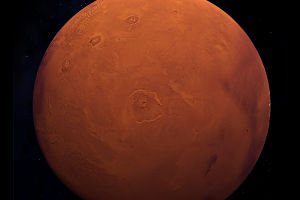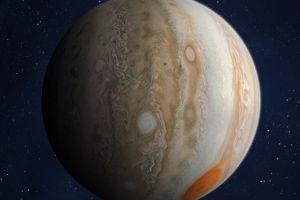The Milky Way is the barred spiral galaxy in which our solar system is located, with an elliptical disk shape and a massive disk structure.
Below are the main structures of the Milky Way.
Galactic center
The geometric center of the Milky Way is the intersection of the galaxy's axis of rotation with the surface of the silver channel. It is in the central projection of the universe and is very bright and spherical, about 20,000 light-years in diameter and 10,000 light-years thick.
The Silver Disc
The silver disk is the main component of the Milky Way, a flat disk of stars, dust, and gas.
Silver corona
The disk of the Milky Way is surrounded by a spherical silver halo, 250,000 to 400,000 light-years in diameter.
Beyond the halo lies a vast spherical region of radio emission called the silver corona, which extends at least 320,000 light-years away from the center of the silver.
Spiral arms
There are five primary spiral arms in the Milky Way, these are the Perseus arm, the Orion arm, the Ship-bottom-Sagittarius arm, the Torus arm, and the Shield-Centaur arm
The Sun
The solar system is located on the Orion spiral arm near the inner edge, about 26,400 light-years from the center of the Milky Way. It rotates counter-clockwise, taking about 220 million years to make one revolution around the silver center.
Warp structure
With the Gaia Space Telescope, it has been further confirmed that the galactic galactic galactic plane, previously thought to be horizontal, is a warped structure with one end high and one end low.
The Milky Way is a mysterious galaxy. Here are eight trivia facts about the Milky Way.
1. The Milky Way is twisted
While the pictures we have seen of the Milky Way show a disk-shaped spiral galaxy, astronomical observations have now revealed that the Milky Way is not flat when viewed from the side, but has a slightly twisted shape at the ends, with a bright core at the centre of the galaxy where a large number of stars have gathered.
2. A 'bubble' at the centre of the galaxy
Scientists have only recently discovered a large structure called a "Fermi bubble" at the ends of the Milky Way, formed by the eruption of the supermassive black hole at the centre of the galaxy, Sagittarius A*, which extends up and down for about 20,000 light years. The cause of these eruptions is still unknown, but they are certainly related to the massive swallowing of matter by the black hole.
3. Galactic mergers are occurring in the Milky Way
Mergers between galaxies are common throughout the Universe, and the Milky Way is in the process of merging with the nearby Andromeda galaxy. In the future, the two galaxies will collide and merge into a more massive galaxy, which will then continue to merge with other galaxies.
4. The Milky Way is in a cosmic super-hole.
Some scientists believe that the Milky Way may be located in a giant cosmic void, the KBC, which is about two billion light years in diameter.
5. The Milky Way is an intermediate galaxy.
The giant known galaxy is IC 1101, which has over 100 trillion stars; other large galaxies have up to 1 trillion stars. Stars are dying and being created every day in our universe.
6. A black hole is at the Milky Way's center.
There is evidence of a massive black hole in the central region of the Milky Way, with a very active galactic nucleus.
7. The Milky Way is within the Local Group of galaxies, which is within the Virgo Supercluster.
The Virgo Supercluster contains about 100 galaxy groups and clusters of galaxies, with the Virgo Cluster at about its centre. It has a diameter of about 200 million light years.
8. The Milky Way galaxy is moving at high speed.
a. The Moon orbits the Earth with a speed of 1.01 km/s.
b. The Earth revolves around the Sun at a speed of 30 km/s.
c. The Sun orbits the Galactic centre of mass at a speed of 250 km/s.
d. The Milky Way orbits the centre of mass of this galactic cluster at a speed of about 600 km/s.


